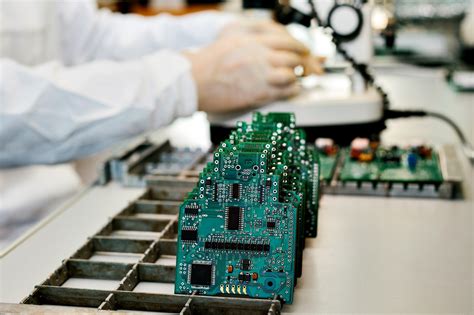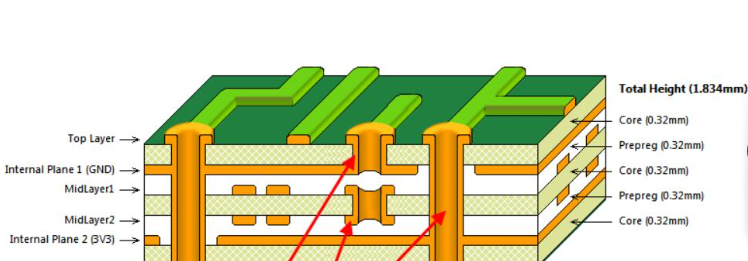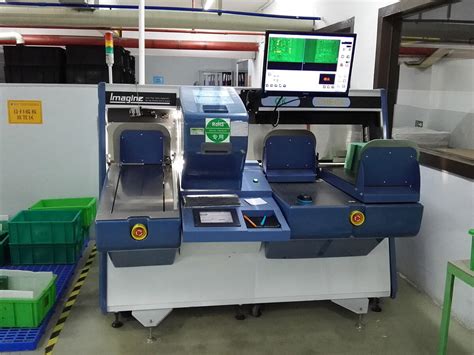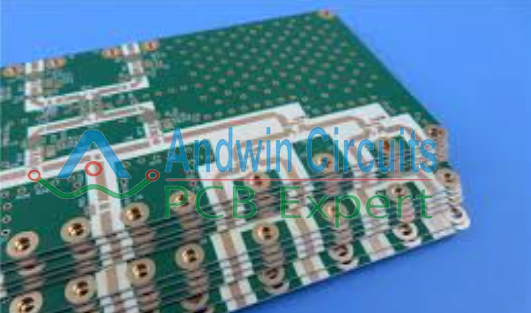Bendable metal core pcb
Advantages Of Bendable Metal Core PCBs In Modern Electronics
Bendable metal core printed circuit boards (PCBs) represent a significant advancement in the field of modern electronics, offering a range of advantages that cater to the evolving demands of contemporary technology. These innovative PCBs are designed with a metal core, typically aluminum or copper, which provides enhanced thermal management and mechanical stability. The ability to bend these PCBs without compromising their structural integrity or performance opens up new possibilities for electronic device design and functionality.
One of the primary advantages of bendable metal core PCBs is their superior thermal conductivity.
Traditional PCBs often struggle with heat dissipation, which can lead to overheating and reduced lifespan of electronic components. The metal core in these bendable PCBs acts as an efficient heat sink, effectively dissipating heat away from critical components.
This thermal management capability is particularly beneficial in high-power applications, such as LED lighting, automotive electronics, and power supplies, where maintaining optimal operating temperatures is crucial for performance and reliability.
In addition to thermal management, bendable metal core PCBs offer enhanced mechanical durability.
The metal core provides a robust foundation that can withstand physical stress and deformation, making these PCBs ideal for applications that require flexibility and resilience.
For instance, in wearable technology and flexible displays, the ability to bend and conform to various shapes without damaging the circuitry is essential. This mechanical flexibility also allows for more innovative and compact designs, as the PCBs can be integrated into spaces that would be challenging for rigid boards.
Furthermore, the use of bendable metal core PCBs can lead to improved electrical performance.
The metal core can serve as a ground plane, reducing electromagnetic interference (EMI) and enhancing signal integrity. This is particularly important in high-frequency applications, where maintaining signal quality is critical. The reduced EMI not only improves the performance of the device but also ensures compliance with regulatory standards, which is a significant consideration in the development of commercial electronic products.
Another notable advantage is the potential for cost savings in the manufacturing process.
The integration of a metal core can reduce the need for additional heat sinks and cooling mechanisms, simplifying the overall design and assembly of electronic devices. This can lead to lower production costs and shorter development cycles, providing a competitive edge in the fast-paced electronics market. Additionally, the durability and reliability of bendable metal core PCBs can result in fewer failures and lower maintenance costs over the product’s lifecycle.
Moreover, the environmental benefits of bendable metal core PCBs should not be overlooked.
The efficient thermal management reduces the energy consumption required for cooling, contributing to more energy-efficient electronic devices. This aligns with the growing emphasis on sustainability and environmental responsibility in the electronics industry. By adopting bendable metal core PCBs, manufacturers can support eco-friendly practices while delivering high-performance products.
In conclusion, bendable metal core PCBs offer a multitude of advantages that address the critical needs of modern electronics. Their superior thermal management, mechanical durability, improved electrical performance, cost-effectiveness, and environmental benefits make them an attractive choice for a wide range of applications. As technology continues to advance, the adoption of these innovative PCBs is likely to increase, driving further innovation and efficiency in the electronics industry.
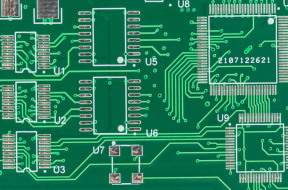
Manufacturing Techniques For Bendable Metal Core PCBs
Bendable metal core printed circuit boards (PCBs) represent a significant advancement in the field of electronics, offering enhanced flexibility and durability.
The manufacturing techniques for these innovative PCBs are intricate and require a deep understanding of materials science and engineering principles. To begin with, the selection of materials is crucial. The core of these PCBs is typically made from metals such as aluminum or copper, chosen for their excellent thermal conductivity and mechanical properties. These metals are then combined with flexible substrates, often polyimide or other high-temperature polymers, to create a composite material that can bend without breaking.
The first step in the manufacturing process involves the preparation of the metal core.
This core must be meticulously cleaned and treated to ensure that it is free from any contaminants that could interfere with the subsequent layering process. Once the core is prepared, a dielectric layer is applied. This layer serves as an insulator, preventing electrical shorts and ensuring that the circuit functions correctly. The dielectric material is usually applied using a lamination process, where sheets of the insulating material are pressed onto the metal core under high pressure and temperature.
Following the application of the dielectric layer, the next step is the creation of the circuit pattern.
This is typically achieved through a process known as photolithography. In this process, a photosensitive material, or photoresist, is applied to the surface of the dielectric layer. The desired circuit pattern is then transferred onto the photoresist using ultraviolet light. Areas of the photoresist exposed to the light harden, while unexposed areas remain soft and can be washed away, revealing the underlying dielectric layer.
Once the circuit pattern is established, the next phase involves the deposition of conductive materials.
This is usually done through electroplating, where a thin layer of copper or another conductive metal is deposited onto the exposed areas of the dielectric layer. The electroplating process ensures that the conductive pathways are robust and capable of handling the electrical loads required by the circuit. After electroplating, the remaining photoresist is removed, leaving behind a precise and clean circuit pattern.
To enhance the flexibility of the PCB, additional layers of flexible dielectric material may be added.
These layers are laminated onto the existing structure, creating a multi-layered composite that can bend and flex without compromising the integrity of the circuit. The final step in the manufacturing process is the application of a protective coating. This coating, often made from a flexible polymer, shields the circuit from environmental factors such as moisture, dust, and mechanical abrasion.
Throughout the manufacturing process, rigorous quality control measures are implemented to ensure that each bendable metal core PCB meets the required specifications.
These measures include visual inspections, electrical testing, and mechanical stress tests. By adhering to these stringent quality control protocols, manufacturers can produce PCBs that are not only flexible but also reliable and durable.
In conclusion, the manufacturing techniques for bendable metal core PCBs involve a series of carefully controlled steps, from material selection and core preparation to circuit patterning and protective coating application. Each step is critical to ensuring the final product’s performance and longevity. As technology continues to advance, these innovative PCBs are expected to play an increasingly important role in various applications, from wearable electronics to advanced medical devices, underscoring the importance of mastering these sophisticated manufacturing techniques.
Applications Of Bendable Metal Core PCBs In Wearable Technology
Bendable metal core printed circuit boards (PCBs) have emerged as a revolutionary advancement in the realm of wearable technology, offering a unique combination of flexibility, durability, and thermal management. These attributes make them particularly well-suited for a variety of applications within the wearable tech industry. As the demand for more sophisticated and reliable wearable devices continues to grow, the integration of bendable metal core PCBs is becoming increasingly prevalent.
One of the primary applications of bendable metal core PCBs in wearable technology is in the development of smartwatches.
These devices require a high degree of flexibility to conform to the contours of the wrist while maintaining robust performance. The metal core provides excellent thermal conductivity, which is crucial for dissipating heat generated by the electronic components.
This ensures that the smartwatch remains comfortable to wear and operates efficiently, even during prolonged use.
Additionally, the durability of the metal core helps protect the internal circuitry from mechanical stress and potential damage, thereby enhancing the overall lifespan of the device.
Another significant application is in fitness trackers, which are designed to monitor various health metrics such as heart rate, steps taken, and calories burned. These devices often need to be lightweight and flexible to ensure user comfort during physical activities. Bendable metal core PCBs offer the necessary flexibility to accommodate the dynamic movements of the user while providing a stable platform for the electronic components. The enhanced thermal management capabilities also play a vital role in maintaining the accuracy and reliability of the sensors embedded within the fitness trackers.
Moreover, bendable metal core PCBs are increasingly being utilized in the development of smart clothing.
This innovative application involves integrating electronic components directly into fabrics, creating garments that can monitor physiological parameters, provide haptic feedback, or even change color based on environmental conditions.
The flexibility of bendable metal core PCBs allows them to be seamlessly incorporated into textiles without compromising the comfort or wearability of the clothing. Furthermore, the metal core’s ability to dissipate heat ensures that the electronic components do not overheat, which is essential for maintaining the safety and functionality of smart clothing.
In addition to these applications, bendable metal core PCBs are also finding their way into medical wearables.
Devices such as continuous glucose monitors, wearable ECG monitors, and other health monitoring systems benefit greatly from the flexibility and durability offered by these advanced PCBs. The ability to conform to the body’s contours ensures that the devices remain securely in place, providing accurate and consistent readings. The superior thermal management capabilities of the metal core also help prevent overheating, which is particularly important for medical devices that are worn for extended periods.
Furthermore, the integration of bendable metal core PCBs in wearable technology is paving the way for the development of more advanced and compact devices.
As electronic components continue to shrink in size, the need for efficient thermal management becomes increasingly critical. The metal core’s excellent thermal conductivity allows for the design of smaller, more powerful devices without the risk of overheating. This opens up new possibilities for innovation in the wearable tech industry, enabling the creation of next-generation devices that are both highly functional and user-friendly.
In conclusion, the applications of bendable metal core PCBs in wearable technology are vast and varied, encompassing everything from smartwatches and fitness trackers to smart clothing and medical wearables.
The unique combination of flexibility, durability, and thermal management offered by these advanced PCBs makes them an ideal choice for the development of cutting-edge wearable devices. As the wearable tech industry continues to evolve, the integration of bendable metal core PCBs will undoubtedly play a crucial role in shaping the future of this dynamic field.

Future Trends In Bendable Metal Core PCB Development
The development of bendable metal core printed circuit boards (PCBs) represents a significant advancement in the field of electronics, promising to revolutionize various industries by offering enhanced flexibility, durability, and performance.
As technology continues to evolve, the future trends in bendable metal core PCB development are poised to address the growing demands for more adaptable and resilient electronic components.
One of the most notable trends in this area is the increasing integration of advanced materials.
Researchers and engineers are continually exploring new alloys and composite materials that can provide the necessary flexibility without compromising the structural integrity of the PCB. These materials are designed to withstand repeated bending and flexing, making them ideal for applications in wearable technology, flexible displays, and other innovative electronic devices. The use of such advanced materials not only enhances the durability of the PCBs but also opens up new possibilities for their application in various fields.
In addition to material advancements, there is a growing emphasis on miniaturization.
As electronic devices become smaller and more compact, the need for equally compact and efficient PCBs becomes more critical. Bendable metal core PCBs are being developed with increasingly smaller components, allowing for greater integration into limited spaces without sacrificing performance. This trend is particularly relevant in the medical field, where miniaturized devices can lead to less invasive procedures and more comfortable wearable health monitors.
Moreover, the trend towards increased functionality is also shaping the future of bendable metal core PCBs.
Engineers are working on incorporating more features into these flexible boards, such as enhanced thermal management and improved electrical performance. By integrating advanced thermal management solutions, these PCBs can effectively dissipate heat, ensuring the longevity and reliability of the electronic components. This is especially important in high-performance applications where excessive heat can lead to component failure.
Another significant trend is the push towards sustainability and environmental responsibility.
As the electronics industry faces increasing scrutiny over its environmental impact, there is a growing focus on developing eco-friendly bendable metal core PCBs. This involves using recyclable materials, reducing waste during the manufacturing process, and designing PCBs that consume less energy. By prioritizing sustainability, manufacturers can not only meet regulatory requirements but also appeal to environmentally conscious consumers.
Furthermore, advancements in manufacturing techniques are playing a crucial role in the evolution of bendable metal core PCBs.
Innovations such as additive manufacturing and 3D printing are enabling more precise and efficient production processes. These techniques allow for greater design flexibility, enabling the creation of complex PCB structures that were previously unattainable. As a result, manufacturers can produce bendable metal core PCBs with higher precision and consistency, leading to better performance and reliability.
In conclusion, the future trends in bendable metal core PCB development are characterized by advancements in materials, miniaturization, increased functionality, sustainability, and manufacturing techniques. These trends are driving the evolution of flexible PCBs, making them more adaptable, durable, and efficient. As technology continues to advance, bendable metal core PCBs are expected to play a pivotal role in the development of next-generation electronic devices, offering new possibilities and solutions across various industries. The ongoing research and innovation in this field promise to unlock new potentials, paving the way for a more flexible and sustainable future in electronics.


